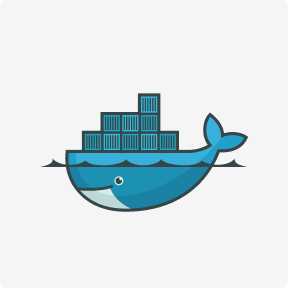Apuestas Deportivas Y Online Casino Online Bono $5, 000
April 6, 202242 Лучшие партнерские программы 2024 Заработок на партнерках без сайта
April 11, 2022When they sit down to try to figure out what went wrong, they’ll make a huge list of things they’ve learned. Then they’ll proceed to repeat those same mistakes on the next project—and the one after that. Automation- A significant element of DevOps is automating manual operations. Automation decreases errors, boosts productivity, and enables teams to focus on tasks with higher importance. Continuous integration and continuous deployment are important automation responsibilities. The DevOps Maturity Model consists of five levels of maturity, ranging from Initial to Optimizing, each level building upon the previous one.
- Your continuous integration system works perfectly well over 90 percent of the time.
- With clear insights on where you stand in your DevOps journey, you are better equipped to evolve into a highly matured environment on an organizational level in a shorter time span.
- DevOps is about continuous improvement, and with each new day, DevOps continues to evolve.
- Moreover, this model provides businesses with a road map for improving their software delivery processes and enhancing their possibilities of business success.
- To help organizations in their DevOps journey, the DevOps Maturity Model was introduced.
- We are backed by Accel Partners & ANSR, a global leader and enterprise transformation platform.
- Service virtualization is leveraged for testing components that are unavailable or difficult to access for development purposes.
Security has always been a part of the DevOps ethos to ship frequently ship high-quality, reliable, and secure software. But, DevSecOps helps emphasize the need to scan your own custom software, analyze the software dependencies in your supply chain, and build security from the inside out. This focus also helps agencies begin to better structure enterprise organizations and staff projects with the right security capabilities directly on the team. It is a methodology that stresses communication, collaboration, and integration between the originally siloed development and operations teams. Implementing DevOps can reduce friction between groups and empower businesses to launch software products faster.
How to Build a High-Performing DevOps Team?
Automation is code to continuous delivery and continuous deployment tools in the DevOps method. By automating monotonous tasks, the automation process helps Development, experimentation and production in a DevOps series, thus preserving time and improving resource efficiency. Besides, CI/CD also enables development teams to commit changes more frequently without compromising stability. The approach is primarily seen as a best practice for agile development but it also serves as fundamental to the robustness of DevOps initiatives. If you need speed and quality at the same time, eliminating manual steps or cumbersome processes is your best bet at achieving it. The DevOps journey is now at a stage where most companies have implemented it at some level and in some form in their software development and IT processes.

Security engages only weeks before go-live of a new release, focusing on the minimum security scans needed to meet compliance. 40% of teams practice ChatOps for conversation driven development during remediation. If you just said “huh, what is ChatOps?” or “I think I’m doing ChatOps, maybe?” – check out a real life scenario and pro-tips. 19% of respondents in your category said they deploy code to production weekly.
Automation
Service virtualization is leveraged for testing components that are unavailable or difficult to access for development purposes. The application is designed https://www.globalcloudteam.com/ to have imported data for testing purposes. Application architecture allows every component of the application to be tested as soon as it is developed .

Release cycles focus on milestones and not on user feedback or market changes. Development, operations, security, and product owners operate in silos, and each ci cd maturity model team has different incentives and priorities. DevOps-like practices are entirely missing or so disjointed that stakeholders have no idea about their use.
DevOps Maturity Connected to Security
A deployment pipeline exists and can deploy to all environments using the same standard process, regardless if it is production or not. There are no manual tasks required, making the process easily measurable and predictable. There is none or minimal human intervention (zero-touch) on each deployment, and they are executed continually. Its adoption is also well understood to be fundamental before beginning a DevOps initiative. Some might say it is the best proxy for measuring the entire DevOps initiative. In any case, too many manual steps or layers of bureaucracy will make your processes too slow to succeed.
You surely must have completed your DevOps journey by this point… The reality is there really is no end to the path towards DevOps maturity. DevOps is about continuous improvement, and with each new day, DevOps continues to evolve. Different architecture styles can support these goals, such as microservices, service-oriented or event-driven architectures. The challenge is choosing the one that best fits your needs, and aligning it with other infrastructure and development technologies that will help.
People and culture first
In looking at thethree ways of DevOps- flow, amplify feedback, and continuous learning and experimentation – each phase flows into the other to break down silos and inform key stakeholders. The first step in moving to DevOps is to pull from agile principles – people first, then process and tools. The percentage of ops team members who said they are “fully” or mostly automated is up by 10% from 2020. More than half of the total developers in the survey are releasing code 2x faster than earlier.

Be it agile or DevOps, more layers of manual effort can bring down the success rate of the development to the ground. Hence, it is the best practice to automate the build and testing process and find bugs early without putting your precious time into manual activities. To achieve this process, you also need to build a pipeline that should be scalable over time so that new features and requirements in the automated build processes can be added transparently and quickly.
Implementation Level
These models help determine how far along organizations are on their DevOps journey and what steps they should take to reach higher levels of DevOps maturity. The bedrock of DevOps, the continuous improvement mindset, is so ingrained that teams can accurately describe how they’re improving. It’s not just that, either; they can say by how much and over what time windows. The product team makes decisions about what features to prioritize based on hard data and conversations with key customers. Project management teams should continue to refine their processes to focus on releasing the minimum viable product for each release.

While developers and Ops are not working together full-time, the two teams collaborate on small-scale projects. Our CEO recently wrote about cloud maturity models that guide companies through the five stages of adopting cloud computing. This article is an intro to DevOps maturity models and the way these frameworks enable companies to make informed decisions when adopting or upgrading DevOps processes.
Architecture
Teams must work together to ensure that everyone is aware of their responsibilities. DevOps practices and are continuously improving their DevOps processes based on data and feedback. There are some sorts of misconceptions about the goal of achieving DevOps maturity. 3Pillar Global uses DevOps as a critical part of our digital product development. Download our Free DevOps guide where we discuss the benefits and common challenges experienced with DevOps or watch our on-demand webinar “Is DevOps Right For You?”.
